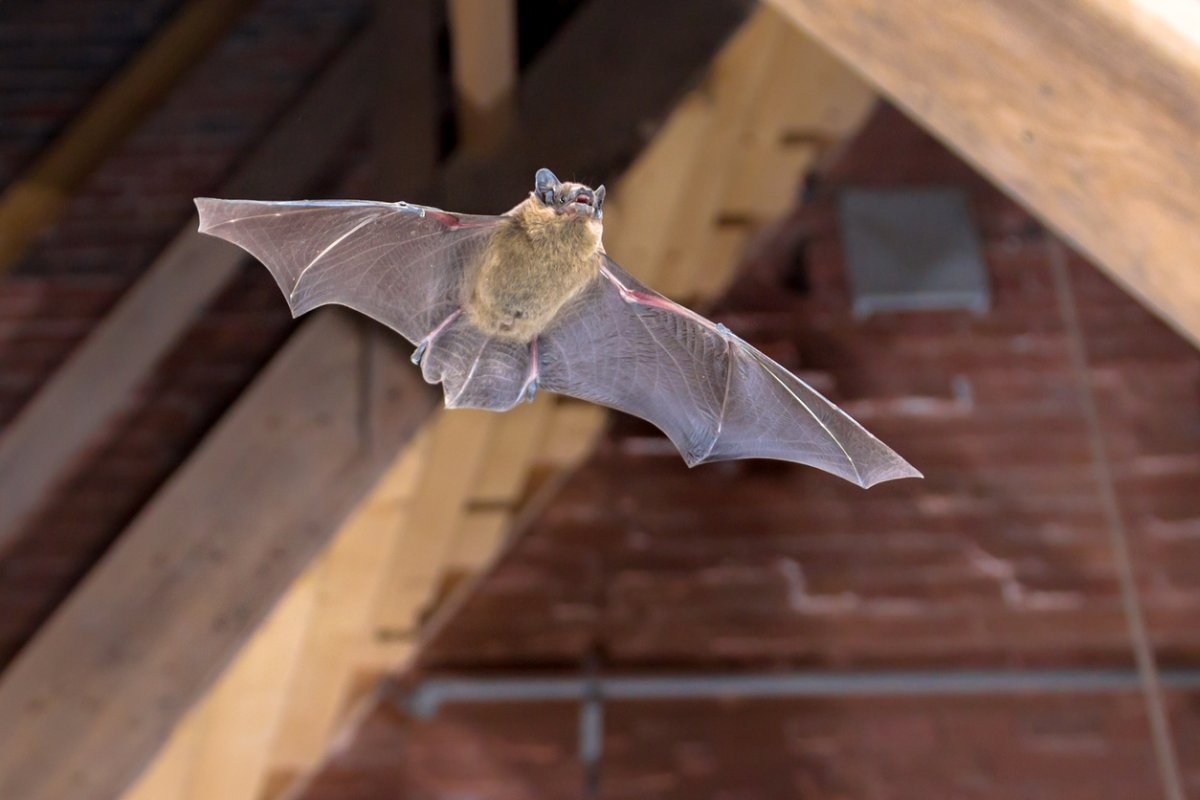

We may earn revenue from the products available on this page and participate in affiliate programs. Learn More ›
Bats aren’t much different from any other creature. “They’re looking for three things: food, shelter, and water,” says Kyle Morgan of Care Pest Pros, a pest control company in Spicewood, Texas. Your attic or walls offer shelter, checking off one of those three items, and generally bats “can find the other two nearby,” Morgan adds.
The good news: Bats are not aggressive. The bad news: If there are bats in your house, it’s only a matter of time before their waste begins to pose a serious problem.
Health concerns aside—and there are indeed legitimate health concerns—bat droppings and urine can destroy wood and other building materials, gradually compromising the structural integrity of your home. So, even if you are not skittish about the idea of bats dwelling under your roof, there are plenty of rational reasons to act fast. Follow the steps outlined below to get rid of bats and prevent them from returning.
Tools & Materials
Bobvila.com may earn a commission from purchases made through these links.
- Chimney cap (if you have a chimney)
- Vent caps
- Caulking compound or expanding foam
- Rubber work gloves
Project Overview
Working Time: 1 to 2 hours
Total Time: 1 to 3 hours
Skill Level: Intermediate
Estimated Cost: $35 to $150
Before You Begin
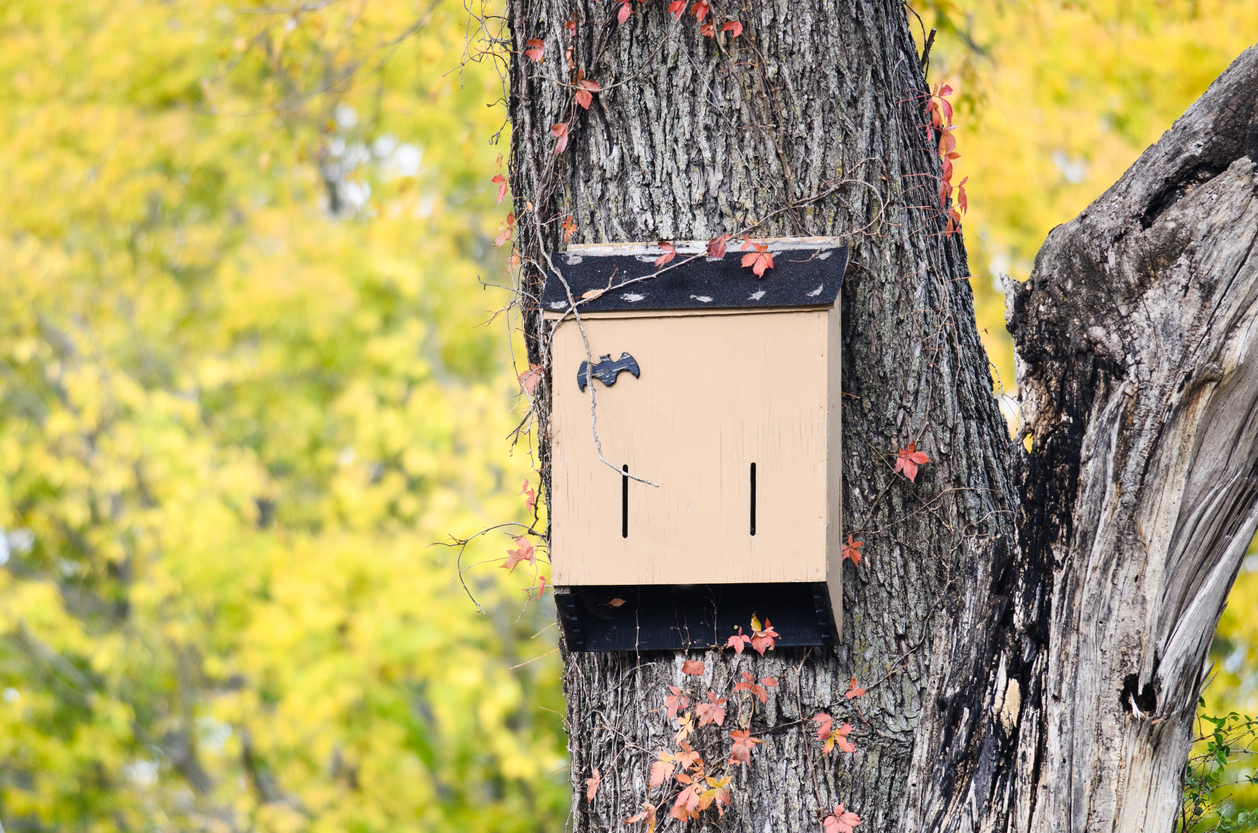
Eliminating a bat problem has less to do with removal than it does with sealing up points of ingress and providing bats with a way to get out but not back in. In fact, bats are good for the environment, so you might want to encourage them to stick around by supplying them with a bat house once you’ve eliminated them from the attic.
If you have a bat problem, don’t delay. Take care of the issue immediately to prevent structural damage to the house. The steps below can help, or you can call a professional. If you’ve discovered your winged residents while prepping your home for a future sale, do the responsible thing and disclose the issue to the future owners.
Step 1: Identify the type of bat that’s in your house.
When you’re trying to get rid of bats, it’s essential to figure out what type of bat you’re dealing with. The first thing to do is learn the common types of bats in your neck of the woods. Next, try to get a good look at the bats, if you haven’t already, so you can compare your observations to your research. As vampire aficionados could easily guess, your best chances of seeing a bat are at dusk and dawn.
There are nearly 50 species of bats in the United States, but only colonizing varieties will make their homes in your attic or under the eaves of your house.
Common Colonizing Bats in the United States
| Common Name | Scientific Name | Appearance | U.S. Distribution |
Big brown bat  Photo: John MacGregor (Land Between the Lakes KY/TN), Public domain, via Wikimedia Commons Photo: John MacGregor (Land Between the Lakes KY/TN), Public domain, via Wikimedia Commons | Eptesicus fuscus | Shiny brown fur and dark brown-to-black wings, ears, feet, and faces | Throughout the U.S. |
Little brown bat 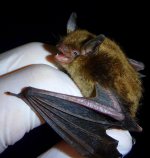 Photo: SMBishop, CC BY-SA 3.0, via Wikimedia Commons Photo: SMBishop, CC BY-SA 3.0, via Wikimedia Commons | Myotis lucifugus | Very similar to the big brown bat but smaller and with a pointier nose | Much of the country, with the exception of parts of the Southeast and a swath pushing north from Texas to Nebraska. |
Pallid bat  Photo: Connor Long via Wikimedia Commons Photo: Connor Long via Wikimedia Commons | Antrozous pallidus | Pale fur, large ears, a pink face, and eyes that are noticeably larger than those of other bats | Western third of the U.S. |
Mexican free-tailed bat  Photo: U.S. Fish and Wildlife Service Headquarters, Public domain, via Wikimedia Commons Photo: U.S. Fish and Wildlife Service Headquarters, Public domain, via Wikimedia Commons | Tadarida brasiliensis | Dark brown to gray with distinctive “free-tail” that extends beyond the tail membrane | Southern U.S. |
Step 2: Do your research.
Once you know what kind of bats are in your house, you can move on to determining whether it is maternity season for that particular species. Maternity season for U.S. bats varies by species and region but typically falls between May 1 and August 31. Local laws may prohibit you from employing exclusion tactics during the bats’ maternity period because if baby bats are inside the house when the mother can’t get back in, those babies will die. There are exceptions to these rules, so check with local authorities for more information.
Your research may well reveal that your bats are a protected species, which means that it’s illegal to kill them. So even if you’re tempted to head up to the attic with a BB gun, think again.
You might also research the migratory patterns of your bat species. Some bats head south for the winter, which would be an excellent time to do your sealing.
Step 3: Determine the bats’ point of entry.
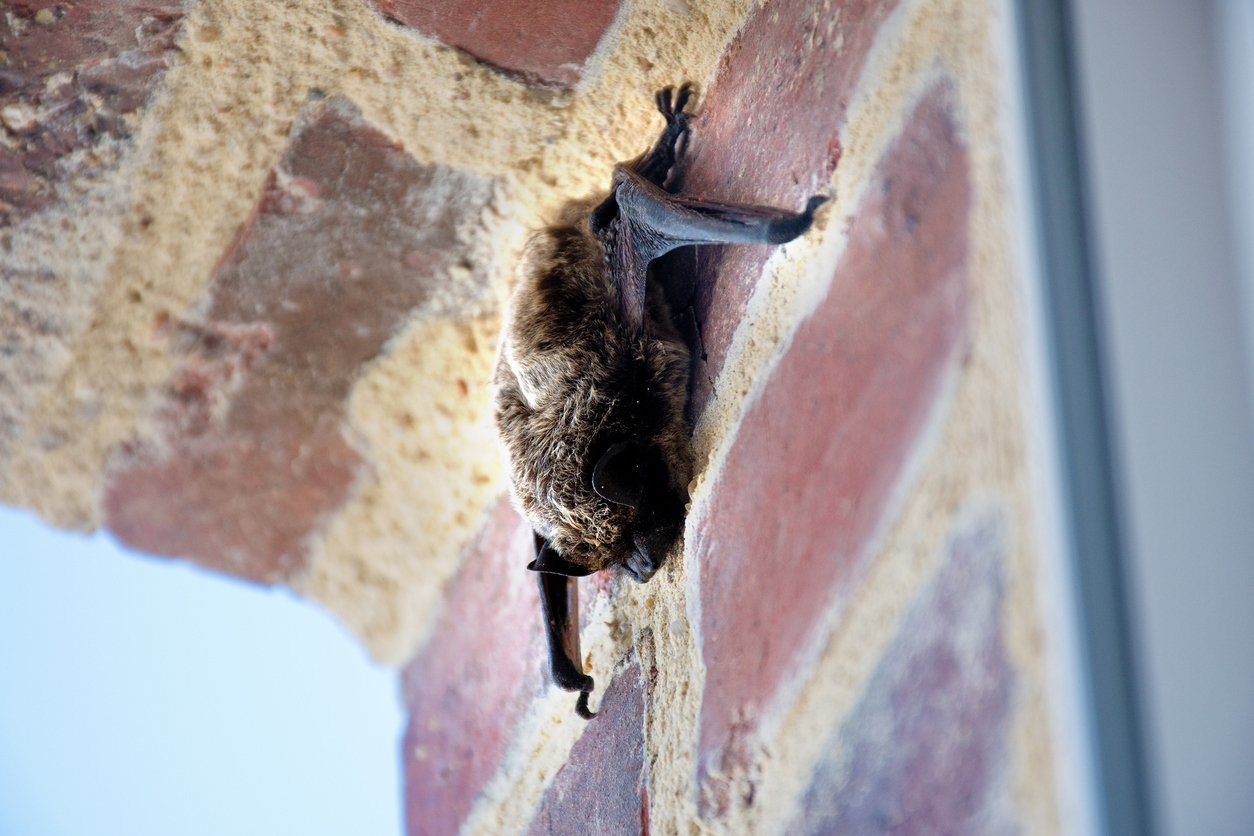
When the time is right to begin excluding the bats, watch your home closely at dusk or dawn so you can pinpoint exactly where the bats are entering and exiting. Bear in mind that a bat colony usually has more than one access point, and these openings can be as small as a half-inch.
Common points of entry:
- Chimneys
- Vents
- Ridge cap of the roof
- Louvers on the side of the home that vent the attic
- Fascia boards on the eaves of a home
Also look at damaged parts of a home’s exterior:
- Warped boards
- Loose sections of siding
- Broken window panes
The telltale sign of bat droppings around these openings will help you confirm where the bats are breaching your home’s barrier.

Tried-and-True Advice
“If you’re having trouble identifying where bats are getting in, try lightly dusting suspected entry points with flour or baby powder before dusk. The bats will leave smudges as they come and go, making it easier to locate their access points.”
—Paul Rankin, Contributing Writer and Editor
Step 4: Seal the openings.
To fill up holes and seal cracks, begin by covering the most common entry point. Install caps on chimneys and vents, and add screens to windows. Repair any holes in roofing or siding that could let bats enter.
Since bats can squeeze through holes as small as ½ inch to 1 inch, you’ll need to be diligent with your repairs. Use caulking compound, such as DAP Elastopatch, or an expanding foam like Great Stuff, to fill cracks or holes. Unlike rats, bats will not chew through material, so either of these products should do the trick.
Step 5: Provide a one-way exit.
One big caveat to all this sealing: You have to provide the bats with a way out. This is where a one-way exit device comes into play. “We use one-way devices because [they allow] the bats out but not back in,” says Morgan. If your chosen device seems to be working, leave it in place for about 3 days to give all your resident bats time to exit.
Step 6: Clean, clean, clean.
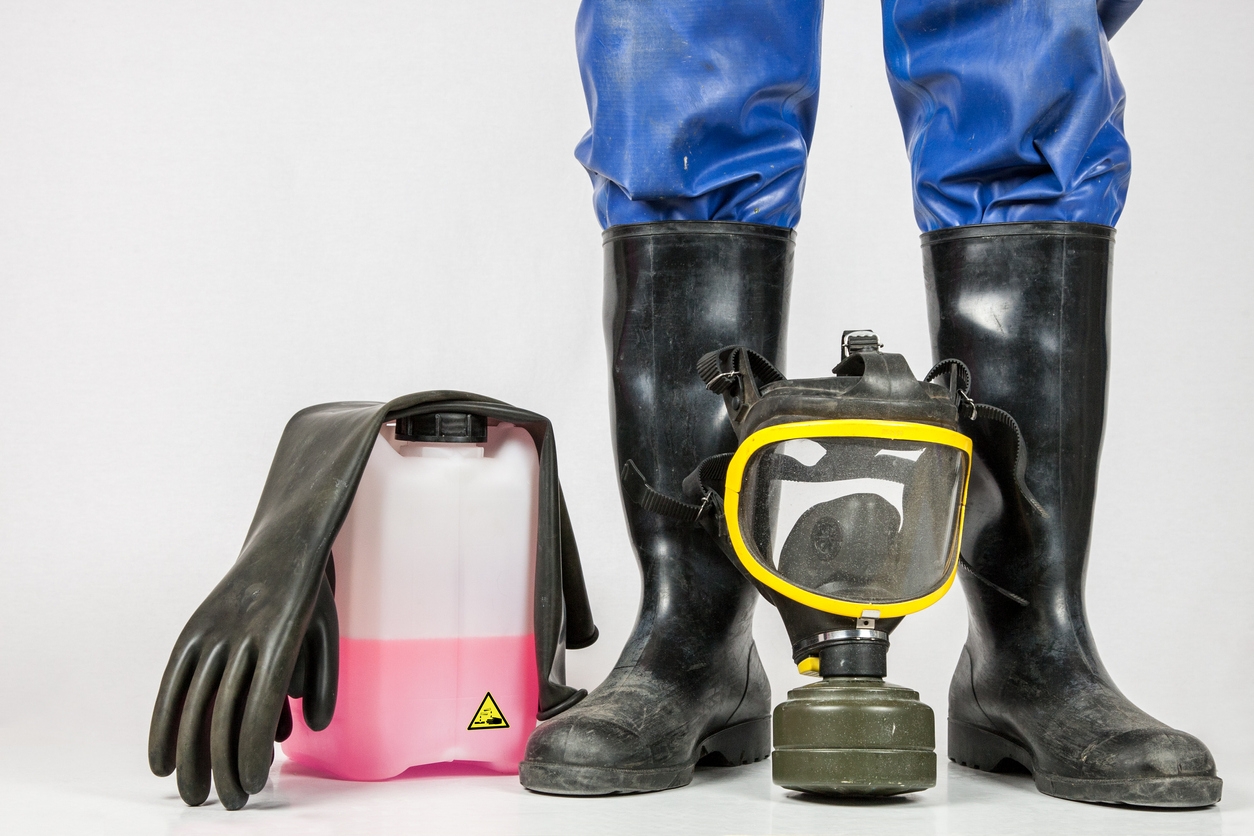
After you get rid of bats, you have a messy job on your hands. The bats will have left droppings and urine in their wake. When cleaning, it’s imperative that you wear the proper protective gear: full-sleeve clothing, rubber work gloves, and an N95 respirator (a dust mask will not provide the necessary protection). “Absolutely wear a mask,” says Morgan. “Histoplasma is a fungus found in bat guano, and it can cause a nasty lung infection” called histoplasmosis, which can be life-threatening.
Before diving into the mess, first lightly mist the area with a solution of water and bleach to kill any pathogens that might be in the air. Remove and dispose of porous materials, such as rugs or fabric, that might be contaminated by bat droppings.
Use a non-ammonia soap or detergent to clean, making sure to thoroughly scrub the area. Rinse with clean water, and then disinfect with a solution of ¼ cup of bleach for every gallon of water. The bleach will kill any remaining pathogens while eliminating odors.
If the job seems overwhelming, you may want to consider hiring a professional bat cleanup crew.
Either way, once the area is no longer toxic, inspect it one more time to ensure you’ve sealed all the holes.
Step 7: Consult a health professional.
If you have any reason to believe a family member may have been scratched or bitten by a bat, check with your doctor to see if rabies vaccines might be in order. With an illness as serious as rabies, there’s no reason to take chances.
Final Thoughts
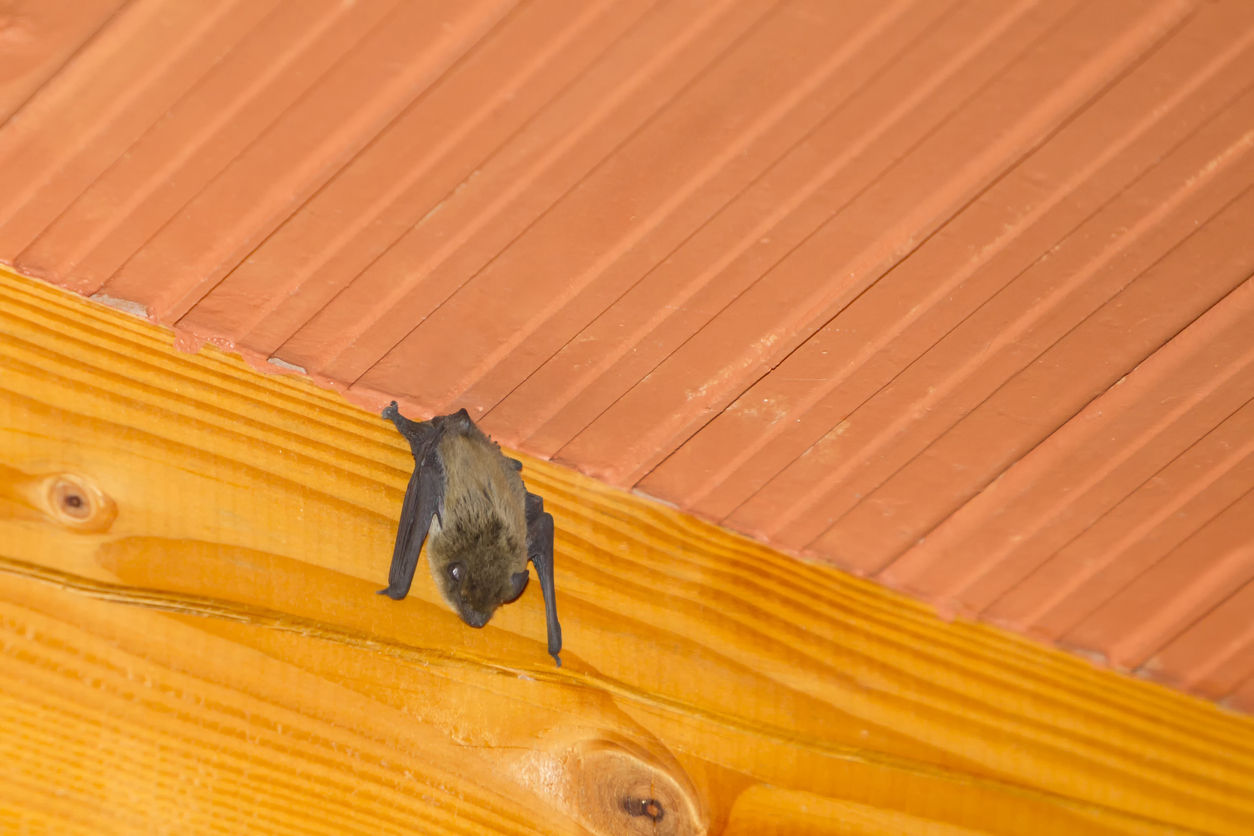
Discovering that a bat family has taken up residence in the attic is enough to give anyone the heebie-jeebies. Fortunately, evicting these winged squatters is as simple as repairing holes on the exterior of your home and closing off vents, chimneys, and other openings.
When getting rid of bats, keep in mind that bats make vital contributions to the environment and are protected in most states, so it’s important that you treat them humanely. Sending your bat residents packing is acceptable, but poisoning them or trapping them and leaving them to starve is a definite no-no. Besides, you’ll want them around to ensure you have a bug-free backyard.
FAQs
If you find one bat in your house, the odds are high that there are more. Bats are very small, so it’s possible that multiple bats can be living in your home without your even knowing it. After finding a bat, proceed with the steps above to determine how they are entering your home.
If bats are attracted to your home, it’s probably because it either presents a food source (indicating you might need pest control) or an ideal nesting spot for a bat looking for a place to expand its brood.
There are a couple of solutions for getting rid of bats that feast on your fruit trees. Scare them off by hanging objects that are visible and make noise, such as wind chimes or windsocks. You also might be able to scare away bats with sound from ultrasonic devices.
While physical barriers will prevent bats from entering your home, some items actually repel them. For instance, bats don’t like the smell of mothballs, white phenol, cinnamon, or eucalyptus. You can try installing bright lights, which they also don’t like, or hanging light-reflecting objects like strips of foil, mirrors, Mylar balloons, or even old CDs.
